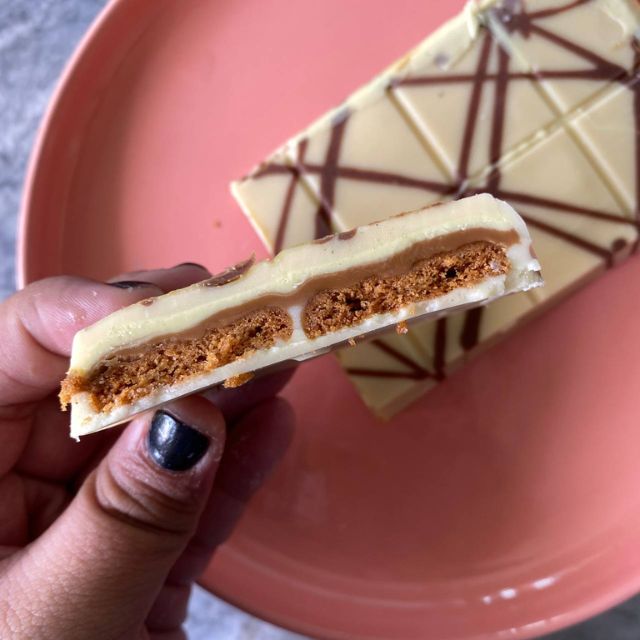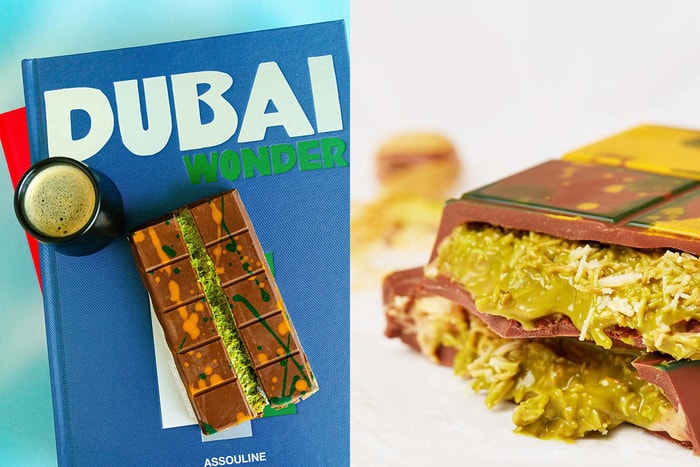Fix Dessert Chocolatier: Why It’s the New Trend in Desserts
Relish the Distinct Quality of Handmade Delicious Chocolate Creations
The world of handmade chocolate developments provides a compelling junction of creativity and scientific research, where each confection is a testimony to the ability of the chocolatier. These unique delicious chocolates, crafted from very carefully sourced cacao beans, disclose a selection of taste profiles shaped by their geographic beginnings and the careful procedures used in their production.
The Art of Chocolate Making
 The procedure of delicious chocolate production is a fragile art that incorporates both science and creative thinking. It begins with the careful option of premium cacao beans, which are sourced from different areas recognized for their unique attributes. The beans undertake fermentation, a vital step that develops their taste profile and aroma. After fermentation, the beans are dried, baked, and cracked open to extract the nibs, which are the heart of the delicious chocolate.
The procedure of delicious chocolate production is a fragile art that incorporates both science and creative thinking. It begins with the careful option of premium cacao beans, which are sourced from different areas recognized for their unique attributes. The beans undertake fermentation, a vital step that develops their taste profile and aroma. After fermentation, the beans are dried, baked, and cracked open to extract the nibs, which are the heart of the delicious chocolate. As soon as the nibs are refined into chocolate alcohol, the artisan chocolatier skillfully stabilizes the proportions of cacao solids, cocoa butter, and sugar. This procedure requires a deep understanding of temperature level control and timing to achieve the wanted texture and flavor. Conching, a method that improves the chocolate's texture, is usually used to remove any type of grittiness and enhance level of smoothness.
Temperatures are diligently monitored during the toughening up process, making certain the delicious chocolate acquires a rewarding snap and a shiny surface when damaged. The last stage involves molding and cooling the chocolate, where creative thinking beams through as artisans check out numerous forms and layouts. Eventually, hand-made chocolate productions mirror both the thorough craftsmanship of the chocolatier and the rich heritage of chocolate making itself.
Flavor Accounts of Handmade Delicious Chocolate
Handcrafted chocolate's flavor profiles are an unified mix of the cacao's origin, processing approaches, and the chocolatier's creativity. Each area where cacao is grown imparts distinctive flavors; for example, beans from Madagascar commonly show intense citrus notes, while those from Venezuela may provide earthy touches and refined flavor. The terroir-- making up soil altitude, climate, and top quality-- plays a critical function fit these distinct attributes.
Processing approaches more impact flavor. Strategies such as fermentation and roasting can boost or reduce certain preference features. A mindful option of toasting temperature level and period permits chocolatiers to open the complete possibility of the cacao, advancing intricate tastes ranging from fruity to nutty, and even floral.
The chocolatier's expertise in blending various cacao selections and incorporating corresponding active ingredients, such as natural herbs or seasonings, includes another layer of deepness to the taste account. fix dessert chocolatier. This creativity changes simple components into a sensory experience, raising hand-crafted chocolate past mere confectionery. The outcome is an abundant tapestry of tastes that welcomes expedition and appreciation, allowing customers to savor the meticulous workmanship behind each distinct development
The Relevance of Top Quality Ingredients
 The foundation of phenomenal handmade chocolate lies in the choice of the finest active ingredients. Premium cocoa beans, sourced from lasting ranches, have distinctive taste accounts that considerably boost the chocolate's complexity.
The foundation of phenomenal handmade chocolate lies in the choice of the finest active ingredients. Premium cocoa beans, sourced from lasting ranches, have distinctive taste accounts that considerably boost the chocolate's complexity.Furthermore, high-quality sugars and all-natural flavorings add to the total sensory experience. Craftsmens commonly like natural or minimally processed sugars to maintain the honesty of the delicious chocolate's flavor. Moreover, the inclusion of authentic and fresh active ingredients, such as vanilla or seasonings, can change a basic confection right into a premium pleasure.
The commitment to making use of high quality components not only boosts the preference but also shows the chocolatier's devotion to their craft. This thorough interest to information cultivates a deeper link between the customer and the designer, as each bite tells a story of passion and know-how. Ultimately, the prevalence of handmade chocolate is a straight outcome of the ingredients picked, highlighting the find more info importance of top quality in achieving a genuinely amazing item. When indulging in delicious chocolate, discerning consumers can appreciate the difference that remarkable active ingredients make.

Craftsmanship and Design Methods
Artistry in chocolate-making transcends mere confectionery; it personifies a careful procedure where craftsmanship and layout techniques play a crucial duty (fix dessert chocolatier). Each hand-crafted chocolate development starts with the mindful choice of high-quality ingredients, yet it is the proficient application of various techniques that transforms these active ingredients into exquisite confections
Craftsmanship includes a deep understanding of tempering delicious chocolate to achieve the best shine and snap. This process needs exact temperature control and timing, requiring both expertise and experience. Additionally, artisans frequently utilize strategies such as hand-piping, molding, and enrobing, enabling for unique shapes and appearances that elevate the visual allure of each piece.
Style strategies are just as essential, as they encompass taste layering and cutting-edge combinations that push the limits of conventional delicious chocolate. Craftsmens may incorporate elements such as edible gold leaf, detailed styles, and seasonal styles to enhance the sensory and visual experience. Each production ends up being a testimony to the chocolatier's commitment, embodying a blend of art and science that astounds the detects. In the realm of hand-made delicious chocolates, the blend of workmanship and style strategies not just delivers indulgent deals with yet additionally tells a tale through each thoroughly crafted piece.
The Experience of Sampling Chocolate
As one savors a piece of chocolate, the experience transcends basic usage; it becomes a multi-sensory journey that engages the taste, aroma, and also the mind. The first encounter starts with the delicious chocolate's aesthetic allure-- its shiny surface area, elaborate layout, and rich color instantly astound attention.
Upon breaking the chocolate, one is welcomed by a rewarding snap, a Get More Info testament to its quality and toughening up procedure. The taste profile unfolds progressively, typically disclosing layers of intricacy.
Scents play an essential duty in this sampling experience. The scent wafting from the chocolate improves anticipation, as the olfactory detects prepare the taste for what is ahead. Eventually, sampling handmade chocolate is not merely concerning taste; it is an expedition of virtuosity, craftsmanship, and the careful treatment that enters into each creation, culminating in a memorable experience that sticks around long after the last item is enjoyed.
Conclusion
To conclude, the special top quality of handmade chocolate productions lies in the detailed procedures of crafting, including the his explanation careful selection of costs ingredients and the proficiency of layout techniques. Each confection shows the creativity and commitment of knowledgeable chocolatiers, leading to distinctive flavor profiles that invite exploration. The sensory experience of sampling these delicious chocolates not just highlights their complexity but also cultivates a much deeper admiration for the workmanship intrinsic in every thoroughly crafted item.
These unique chocolates, crafted from thoroughly sourced cacao beans, disclose a range of taste accounts shaped by their geographical beginnings and the careful processes used in their creation. Ultimately, hand-made delicious chocolate developments reflect both the careful craftsmanship of the chocolatier and the abundant heritage of delicious chocolate making itself.
Hand-crafted chocolate's flavor accounts are a harmonious blend of the cacao's beginning, processing approaches, and the chocolatier's artistry. Artisans commonly prefer organic or minimally refined sugars to maintain the honesty of the chocolate's taste. Ultimately, tasting handmade delicious chocolate is not merely regarding taste; it is an expedition of artistry, workmanship, and the careful care that goes right into each production, finishing in an unforgettable experience that remains long after the last piece is taken pleasure in.